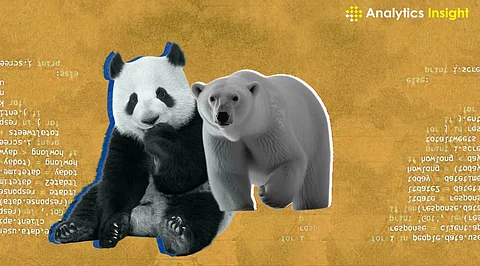

Data analysis is at the heart of many fields today, from finance and healthcare to marketing and academia. As data sets grow larger and more complex, the tools used for data manipulation and analysis become increasingly important. In the realm of Python, two popular libraries for data analysis are Pandas and Polars. Both offer powerful features for working with tabular data, but they have distinct advantages and use cases. In this article, we'll explore the features of Pandas and Polars and discuss which one might be the best choice for your data analysis needs.
Pandas is arguably the most widely used Python library for data manipulation and analysis. It provides data structures like DataFrame and Series, which are flexible and efficient for handling tabular data. Pandas offers a wide range of functions and methods for data cleaning, transformation, aggregation, and visualization, making it a versatile tool for data analysis tasks.
One of the key strengths of Pandas is its ease of use and familiarity to Python users. Its syntax is intuitive and concise, making it accessible to beginners and experienced programmers alike. Additionally, Pandas integrates seamlessly with other Python libraries such as NumPy, Matplotlib, and Scikit-learn, allowing for a comprehensive data analysis workflow.
However, Pandas may struggle with performance when working with large datasets due to its reliance on single-threaded execution and memory overhead. As datasets grow larger, operations like groupby, join, and sorting can become slow and memory-intensive, limiting scalability and efficiency.
Polars is a relatively new library for data manipulation and analysis in Python, inspired by the Rust DataFrame library of the same name. It aims to address some of the performance limitations of Pandas while maintaining a familiar interface and syntax.
Polars is built with performance and scalability in mind, leveraging multi-threaded execution and efficient memory management to handle large datasets more effectively. It offers similar data structures and functionalities as Pandas, including DataFrame and Series, along with a rich set of operations for data manipulation and analysis.
One of the standout features of Polars is its support for lazy evaluation and query optimization. By deferring computation until necessary, Polars can optimize query execution and minimize memory usage, resulting in faster and more efficient data processing.
When deciding between Pandas and Polars for your data analysis tasks, several factors come into play:
Dataset Size: If you're working with small to medium-sized datasets that fit comfortably into memory, Pandas may be the more convenient choice due to its familiarity and ease of use. However, if you're dealing with large datasets that exceed available memory, Polars' superior performance and scalability make it a compelling option.
Performance Requirements: If performance is a critical consideration for your analysis, especially with large datasets and complex operations, Polars' multi-threaded execution and lazy evaluation can offer significant performance gains over Pandas.
Community and Ecosystem: Pandas has a vast and active community, with extensive documentation, tutorials, and third-party packages available for various data analysis tasks. While Polars is gaining traction within the Python community, it may not have the same level of community support and ecosystem as Pandas.
Learning Curve: For users familiar with Pandas, transitioning to Polars should be relatively straightforward, as they share similar syntax and functionality. However, if you're new to data analysis in Python, Pandas' extensive documentation and resources may make it a more accessible choice for learning and experimentation.
Both Pandas and Polars are powerful tools for data analysis in Python, each with its strengths and use cases. Pandas is well-suited for small to medium-sized datasets and offer ease of use and a rich ecosystem of resources. Polars, on the other hand, shines in terms of performance and scalability, making it perfect for effectively managing huge datasets and complicated procedures.
Ultimately, the choice between Pandas and Polars depends on your specific requirements, including dataset size, performance considerations, and familiarity with the libraries. Consider experimenting with both libraries and evaluating their performance and suitability for your data analysis tasks to determine which one best fits your needs.
Join our WhatsApp Channel to get the latest news, exclusives and videos on WhatsApp
_____________
Disclaimer: Analytics Insight does not provide financial advice or guidance. Also note that the cryptocurrencies mentioned/listed on the website could potentially be scams, i.e. designed to induce you to invest financial resources that may be lost forever and not be recoverable once investments are made. You are responsible for conducting your own research (DYOR) before making any investments. Read more here.
